German main battle tank Leopard 2: stages of development. Part of 13
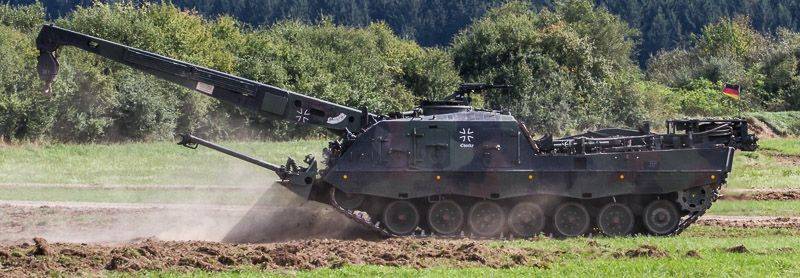
A country: Germany / Netherlands
The repair and recovery tank was developed by Germany in cooperation with the Netherlands in the late 80s. Today it is the standard recovery vehicle of German tank battalions and artillery troops. A total of 75 Buffel ARVs were manufactured for the Bundeswehr, 25 vehicles for the Dutch army and later 25 vehicles for Switzerland. In 2002, Greece ordered 12 vehicles and all of them were delivered. Another 16 cars left for Spain. Austria also rented two Buffel cars from the Netherlands, which were returned back in 2007.
In order to reduce the cost and simplify the supply of spare parts in the car using the various components of the tank Leopard 2. First of all, it is a suspension, power unit and part of the hull structure.
BREM Bergepanzer is not equipped with a rotating tower, instead of it a large superstructure was installed in front of the left on the roof of the hull. It houses crew jobs and part of the onboard equipment. The remaining tools are transported on the hull roof and in the stern.
Access to the hull is through three doors from the left side. The driver's seat is located in the front of the case and slightly shifted to the left. Several large periscopic instruments are installed in its hatch cover opening to the left, but with the hatch cover open, the driver has a good view even in the most difficult conditions. Immediately behind the driver's seat is the seat of the commander, the lid of his raised hatch opens back.
The machine is not equipped with stabilized sights, only optical periscopic instruments are installed. To work at night, they can be replaced by passive devices.
On the case on the right side there is a crane with a maximum loading capacity of 30 tons, rotating on 270 °. During operation, the monitoring system monitors the crane installation and limits its movement in the event of an overload.
The main winch with traction force 350 kN is mounted centrally in front of the hull. Due to the return rollers, its pulling force can be doubled. The cable has a diameter of 33 mm and a total length of 180 meters. The peculiarity of this winch is that the net power does not depend on the length of the cable and therefore the maximum power is always available. For emergencies, an auxiliary winch with a tractive force 6,5 kN is installed to the right of the main one.
Large dozer blade is installed in the front of the hull. It is used for earthmoving or stabilizing a tank when operating a crane installation. It also has an attachment point for an automatic rigid coupler, which is used to evacuate defective tanks under armor protection. If stuck with self-digging equipment, the tank can pull itself out.
The hull design allows you to place a full-fledged power unit of the tank Leopard 2, including the engine, filters, radiators and transmission. Replacing the power unit in a combat situation takes only 30 minutes.
For the installation of smoke screens on the machine are two starting systems. In the front of each board installed on 4 launchers. In the stern, one block of 8 launchers is installed. BREM Buffel is equipped with a system of protection against weapons of mass destruction and fire extinguishing system.
The main weapon is the 7,62-mm anti-aircraft machine gun mounted on the commander's hatch.
Since the mass of the Bergepanzer 3 BRAM is less than the mass of the Leopards 2 tanks, its mobility is somewhat higher. The power reserve was increased by installing an additional fuel tank on 400 liters. The tank is able to overcome even deep-sea areas of introductory barriers.
Bergepanzer 3 Buffel ISAF
A country: Germany
The Buffel variant for ISAF (the command of the international security assistance forces in Afghanistan) was finalized to reflect the full range of anti-tank threats of the Afghan theater. Therefore, additional protection kits were installed on the tank. It includes new side screens, reinforced protective blocks on the sides in the front, lattice screens around the perimeter of the car and the same mine protection as the Leopard 2A6M variant.
In Afghanistan, the modified machines were operated by the German contingent. After the return, the lattice screens and massive side screens were removed.
Bgbv120
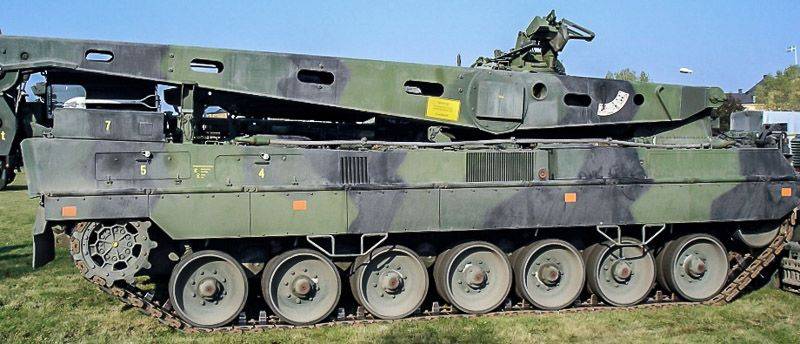
First appearance: 2002 year A country: Germany / Sweden
Bgv 120 is a new version of the German BREM Buffel, which was finalized for the needs of the Swedish army. The main change is to increase the level of crew protection. An additional reservation was received by the habitable compartment. Anti-aircraft machine gun on the hatch commander received a remote control.
The conventional smoke grenade installations installed at Buffel have been replaced by the GALIX system.
Another important element of the Bgbv 120 ARV is a new evacuation equipment installed in the stern. It is equipped with a camera and can be remotely controlled from the fighting compartment.
Kodiak
First appearance: 2003 year A country: Germany / Switzerland
Rheinmetall Landsystems and RUAG have developed a modern engineering machine based on Leopard 2 and called it Kodiak. The machine is based on a modified Leopard 2 case and has a large superstructure on the body, comparable to the Buffel BREM superstructure. The most important difference is that the add-on for Kodiak is divided into two parts. This is necessary because the tank carries the most important component on the roof of the front of the hull. A large excavator arm is installed here, which is folded on the roof of the hull during transport. It is used for positioning equipment, clearing obstacles and other engineering tasks. Kodiak BRAM is equipped with a mounting unit for installation of dumps of different types. The available range of tools ranges from several types of dumps to demining equipment. Other special Kodiak machine tools include winches mounted in front and behind.
The crew consists of two people sitting in the superstructure, which can also accommodate the office of technical specialists. The commander is on the right and the driver is on the left. Each has a hatch for boarding and disembarking from the car. On the hatch of the commander also installed anti-aircraft machine gun. Both crew members have simple periscopes for observation. The driver can also use the rear view camera installed in the stern.
The stern also has large drawers for storing engineering equipment and tools. At the moment, there are three customers at Kodiak BREM. Sweden is counting on 6 and the Netherlands on 10 machines, while Switzerland has already received 12 units. All countries operate existing modified machines, rather than newly-made Kodiak.
Wisent 2
First appearance: 2012 year A country: Germany / Canada
The Wisent 2 is a modern support vehicle based on the chassis of a Leopard 2 tank. It was developed by the German company FFG and is in service with the Canadian army. A unique feature of the Wisent 2 is that it can be used both as an engineering and as a repair and recovery vehicle.
The Wisent 2 is based on the deeply modified hull of a Leopard 2 tank. The car is somewhat similar to the Buffel ARV, but there are also differences. The tower was removed and a large superstructure was installed in front. It is longer than the superstructure at Buffel, and accommodates three crew members. If necessary, it can accommodate a few more soldiers. The crew of the BREM Wisent 2 consists of a driver, commander and mechanical engineer. The machine is armed with a light remote-controlled machine gun. Reservations provide protection from shell fragments and machine-gun fire, but its level can be enhanced by ballistic nets, gratings or dynamic protection units.
One of the important elements of the machine is a modular electronic and hydraulic system, which can accept various special and serial tools and devices.
The main task of Wisent 2 is repair and evacuation work. A large crane can be mounted on a support located in front of the right of the crew compartment. The maximum payload is 32 tons, which allows you to lift heavy objects or even parts of the tank. As with the Buffel variant, the tap can be rotated 270 °. A tank can transport a complete power unit from Leopard 2, including a transmission and radiators, or even a tower on the cargo area of the hull.
Instead of a crane, the Wisent 2 can also be equipped with an excavator boom. Replacing one with another takes 5 hours, which is quite acceptable, given that you get a car with completely different functionality. An excavator bucket turns the Wisent 2 into a real engineering machine, capable of performing a wide range of engineering tasks, such as opening positions or clearing obstacles. The depth of the notch is 4,4 meters and the bucket volume is 1,3 m3.
In addition to the crane or excavator bucket, the Wisent 2 is equipped with other tools. The most noticeable is a large dozer blade mounted in front of the hull. It is used for clearing obstacles or as a support. The blade is available in two different versions, small and wide. If the smaller heap has a correspondingly smaller mass, then the wide blade is more suitable for leveling the surface. Instead of a dump, the Wisent 2 ARV can be equipped with a full-width mine plow or roller trawl, as well as a passage marking system. Electrical and hydraulic connectors in the front of the case allow you to install other equipment if necessary.
The wisent also comes with two front-mounted winches. The main winch can pull a ton of 46 tons, while a less powerful winch can pull 3,6 tons. The length of the cables at the winches respectively 160 and 280 meters. It is worth noting that the tank is equipped with an automatic rigid coupling system Combat Recovery System (CRS). It essentially consists of two rigid couplers installed in the hull aft. Traction interconnected and lowered and raised by the command of the operator sitting in the tank. The operator uses the camera to control the CRS and fix it on the towed tank. This allows the crew to evacuate cars without leaving the tank and remaining under its protection.
Wisent is the most powerful engineering machine available on the market. The performance of two functions, repair and evacuation and engineering, can significantly save money when buying a car. The problem lies only in the structure of the units, since engineering and evacuation tasks are usually performed by different units. But with a change in army structures, we can see the adoption of the Wisent machine by other countries, and not only by Canada.
Leopard 2R
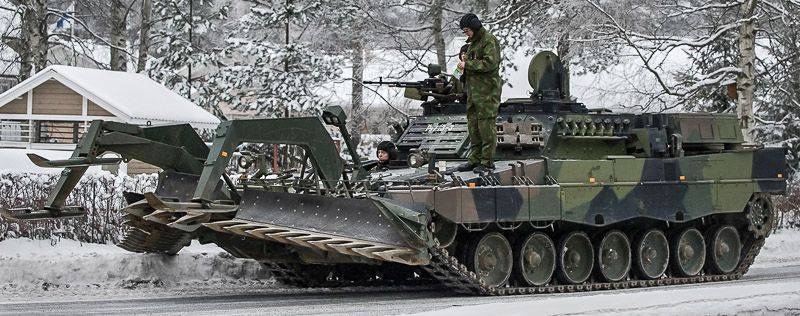
A country: Germany / Finland
Leopard 2R (Raivauspanssarivaunu - tank mine sweeper) is a special demining machine based on the Leopard 2 tank, which was developed for Finland. The basic concept is similar to the American ABV machine based on the M1 Abrams tank chassis, but without the XMUM XMUM X mine clearance system.
The Leopard 2R was taken as a basis for the Leopard 2A4 case with almost no modifications. In front of the case there are special attachment points with hydraulic drives, which allows you to install various dozer blades and other equipment for mine clearance. It includes the FWPM (Full Width Mine Plow) full width mine plow developed by Pearson Engineering, the most powerful demining device on the market. The FWMP is a large plow consisting of three knives with forked blades for digging mines from the ground. Dug out mines pushes apart. The blade does not tear the surface, which reduces the weight of the entire system and also the amount of soil that needs to be moved. At the top of the blade there is a metal grid that traps debris and stones that can hit the hull. In front of the FWPM system, there are three large feet used to control the depth of clearance. It can be adjusted from 175 to 300 mm, the maximum passage width is 4,2 meters. The passage being made is wider than the tank and therefore the machines following it are simpler in terms of the route. If there is not enough space on the sides for such a wide passage, you can remove the central part of the FWPM blade and thereby reduce the clearance width. Due to its size, FWPM is not transported by a Leopard 2R tank, but loaded onto a special truck. If necessary, the Leopard 2R can also be equipped with smaller dozer blades. To illuminate the area in front of the tank, especially during demining, the headlights were modified. In front of the case there is a metal rod, on the upper end of which two spotlights are fixed. They are set up so that the top of the demining equipment is lit and the area in front of it. Conventional headlights were also raised higher so that their light is not blocked by the FWPM system. The rear view camera installed in the rear of the vehicle is much larger than the cameras of other Leopard 2 tanks. Since the driver of Leopard 2R is driving a car through minefields, he needs an image with a significantly higher resolution and detail.
The usual Leopard 2A4 turret was replaced by a special superstructure, which in appearance resembles the CV90 BMP turret, but much wider. It accommodates the operator (left) and the commander (right). Access to workplaces is through separate hatches in the roof. Each hatch is equipped with several periscopic devices, allowing to obtain a wider field of view. A large periscope is installed in front of the commander's hatch, the same periscope is installed on the Leopard 2A5 tank. The design of the hatches is also interesting because it somewhat resembles the design of the hatches of the T-72 tank. Commander's hatch also has a mount for anti-aircraft machine gun. It is not intended for the MG3 machine gun, installed by the Finnish army on their Leopard 2 tanks. Instead, it can be installed 12,7-mm machine gun NSVT / Kord. This makes the Leopard 2R engineering vehicle the only option for a Leopard 2 tank with such weapons.
A marking device for passages in minefields is installed at the rear of the Leopard 2R tower. The system consists of a control unit and two shipping containers. The control unit allows you to move containers to the transport / marking position and shoot markers. Containers are transported on the roof of the stern of the tower and are only advanced when markers are set. Each container contains 50 markers, each of which is individually fired on the ground. Each marker has a length of one meter and is covered with bright reflective material. In the stern of the machine are large storage baskets. They contain equipment clearance, tools and personal equipment of the crew.
A total of 10 machines were manufactured and deployed to the troops. All tanks are based on existing tank hulls Leopard 2A4.
Leopard 2L

A country: Germany / Finland
The Leopard 2L (Leguan), a tank bridge construction based on the Leopard 2, was developed in Finland. Instead of the modern PSB2 bridge construction project, the proven Leguan system was chosen. The development of the tank Leopard 2L was carried out jointly with the company KMWeg based on the tank Leopard 2A4. A total of 10 vehicles were manufactured on the basis of existing tanks.
A4 tank turrets were removed, and the hull deeply refined. The use of the hulls and power unit of the Leopard 2 tank ensures excellent mobility of the vehicle. In the front of the case there is a small dozer blade, including a hydraulic mounting device. The blade is used for clearing obstacles and leveling positions, as well as for stabilizing the machine while building a bridge. A device to build a bridge is installed on the roof of the hull. It consists of levers, an electro-hydraulic drive and a control unit. Also on the case are containers for storing tools and personal equipment. The bridge itself consists of two parts of the sliding type, its rear part is transported over the front part. During operation, the rear part moves back, lowers and aligns with the front. Then the bridge as a whole moves forward to the site prepared for the crossing.
The crew of the Leopard 2L consists of a driver and a commander, which are located in front of the hull. The driver’s seat is on the right and the commander’s is on the left.
The bridge can be deployed directly from the tank, without crew members going outside. Several cameras installed around the perimeter of the machine provide the crew with a good overview of the surrounding area, as well as the bridge itself. Leopard 2L is based on the German concept of using the Leguan system, but it has specific details. The newest MLC 80 bridge with a length of 26 meters is installed on the tank. It is also worth noting that the Leguan bridge deck is not a modern, powerful bridge system. Because of the design features, the bridge can be guided through only a few types of obstacles. For example, it is used only for guidance through ditches and water barriers with prepared shores.
Leopard 2 Leguan
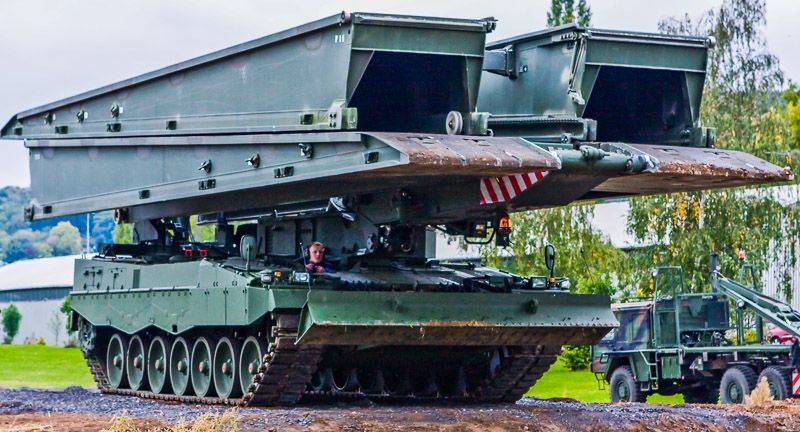
A country: Germany
KMWeg offers Leopard 2 with a modern Leguan bridge system. The extendable bridge has a length of 28 meters and can be transported by machine category by weight up to the MLC 70. On the basis of the Leopard 2 was made and tested one machine, and not received by the troops. It was also used as a model for the Finnish Leopard 2L bridge laying machine.
Leopard 2 Leguan 2x14m
First appearance: 2013 year A country: Germany
At Eurosatory 2014, Krauss-Maffei Wegmann introduced a new version of the Leguan bridge laying machine. The tank has a modernized guidance system, as well as a bridge of new design.
The machine is based on the body of the tank Leopard 2. The crew consists of a driver and a commander / operator. The driver's seat is located in the front of the hull on the right and basically looks like the driver's seat of a conventional Leopard 2 tank. The commander is sitting to the left of the driver at the site of the front unit, he has a separate hatch.
The tank is equipped with a small dozer blade mounted in front of the hull. It is used to prepare the site for the bridge, clearing obstacles and stabilizing the machine during the bridge building process. Additional equipment of the tank bridge layout also includes containers and baskets for storage around the turret and at the rear of the hull. On request, the same auxiliary power unit can be installed as on a Leopard 2A7 tank.
Instead of one bridge, this version of Leguan is able to deploy two separate bridges. Each bridge has a length of 14 meters, both of which are transported on top of each other on the roof of the hull. In order to build bridges separately, the tank is equipped with two pointing devices. The main device is installed on the roof of the hull instead of the tower, and the second is installed in the aft hull. The main device is used to hover and collapse the bridge, and the second to hold and move bridges.
Bridging can be carried out completely under the protection of armor, without leaving the crew of the car. A small optical unit is installed on the main guidance device, allowing the commander to observe the terrain and direct the bridge. This unit contains day and night sights and a laser rangefinder. The sight can also be used by the driver at night. Additional camera is installed in the rear of the hull.
To overcome the obstacles the second bridge rises. Then the first bridge rises and moves forward. When it is advanced, the second bridge is moved forward as well and is intercepted by the main pointing device.
The new version of the Leguan Bridge Layer is a very powerful system. A significant innovative element is the possibility of building two bridges. The tank has a high level of booking and provides the crew with good protection. The possibility of fighting is very mediocre, there is only the ability to install a remote-controlled machine gun.
Krauss-Maffei Wegmann recently announced it has signed a contract for the supply of five LEGUAN tank-laying tanks to the chassis of a Leopard-2 tank for the armed forces of the Netherlands.
The contract was signed with the German Federal Office for Arms, Information Technology and Maintenance (BAAINBw), acting on behalf of the Netherlands Military Product Purchase Organization (DMO).
In addition, the agreement includes the delivery of simulators and auxiliary equipment, and also contains an option for the supply of additional bridge-laying machines. The order will be executed between 2019 and 2020. The cost of the sale was not disclosed. The new bridge laying will be replaced by the existing Bieber bridge laying made on the Leopard-1 MBT chassis.
Panzerschnellbrucke 2
First appearance: 1999 year A country: Germany
When deploying Leopard 2A5 and А6 tanks in Germany, there was no tank bridge laying system capable of supporting heavy tanks. The Bieber standing bridge supports only tanks up to ML 60, that is, up to the Leopard 2A4 version. Re-equipment of machines with a more powerful bridge was considered as an option, but this meant that it was necessary to extend the service life of hulls based on the Leopard 1 tank. In the end, the joint development of a new tank bridge construction with the Netherlands began.
The Panzerschnellbrucke 2 (Fast Tank Bridge) has a very specific design. The bridge itself consists of three parts, which are transported on top of each other. The length of each part is 9,7 meters, they can be induced individually or in combination with two other parts. This allows the tank to build bridges with lengths from 9,70 to 27,70 meters. All the necessary components for the transportation and guidance of the bridge are combined in the mechanism of guidance. In the case of the machine is placed the necessary system of hydraulic drives.
The crew of the PSB2 roadblock consists of a commander and a driver, which are located in front of the hull. Building a bridge is carried out by the crew without getting out of the car.
It was assumed that the Panzerschnellbrucke 2 tank bridge will replace the outdated Bieber bridge layer. But because of its high cost, orders have not been received for it.
Materials used:
www.kampfpanzer.de
www.tanks-encyclopedia.com
www.warspot.ru
www.trmilitary.com
www.btvt.narod.ru
www.primeportal.net
www.flickriver.com
www.kollektsiya.ru
www.pinterest.com
www.wikipedia.org
en.wikipedia.org
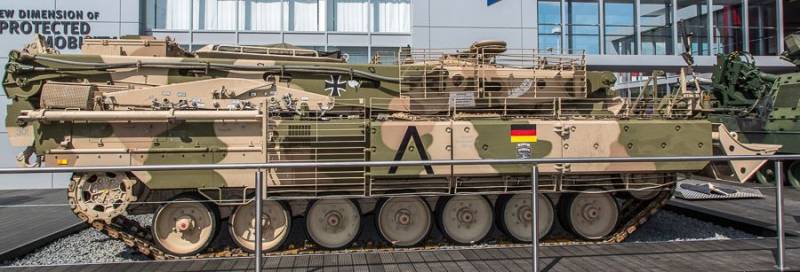
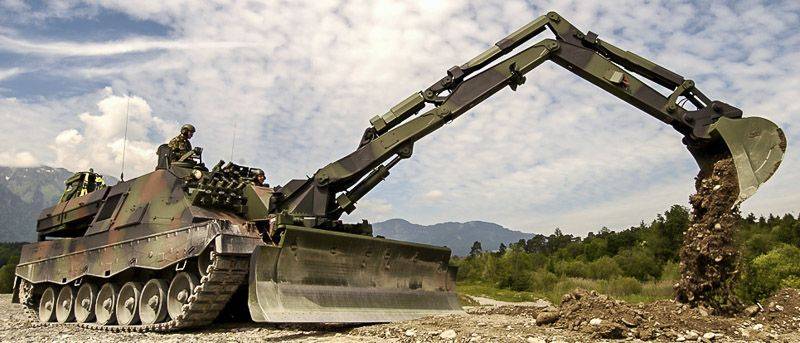
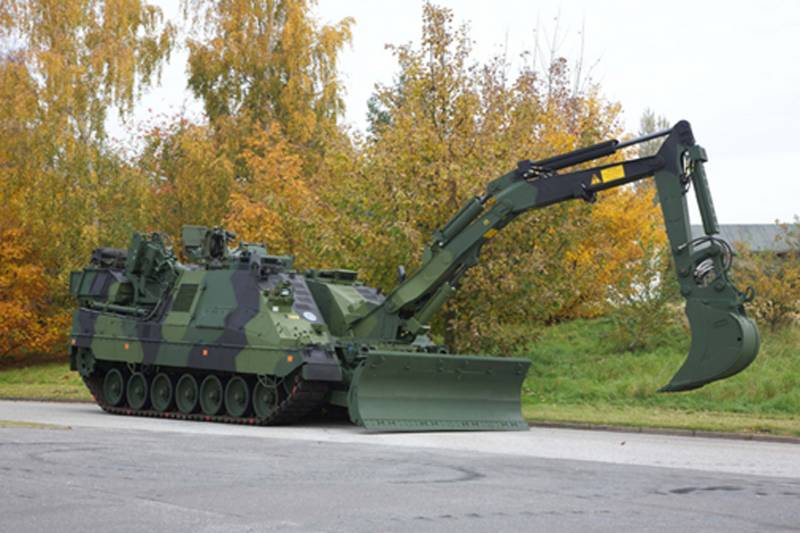
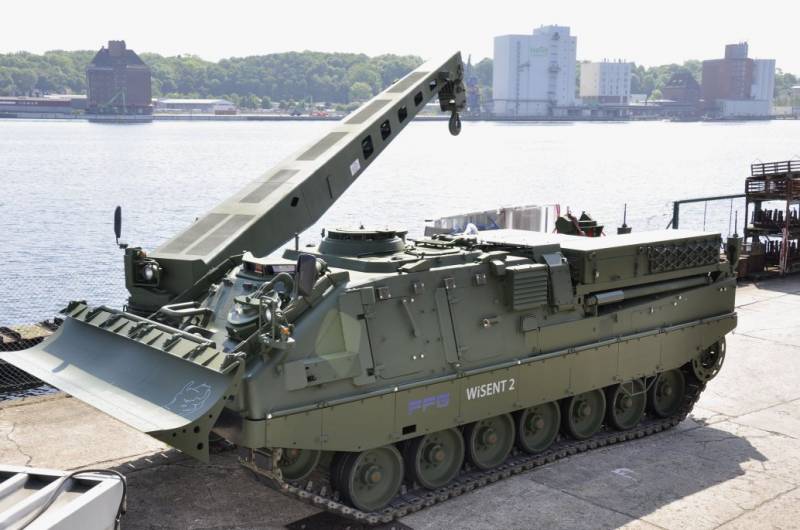
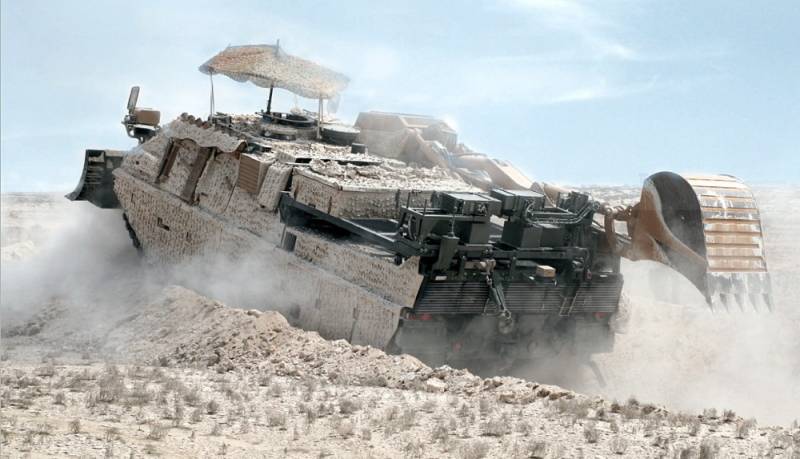

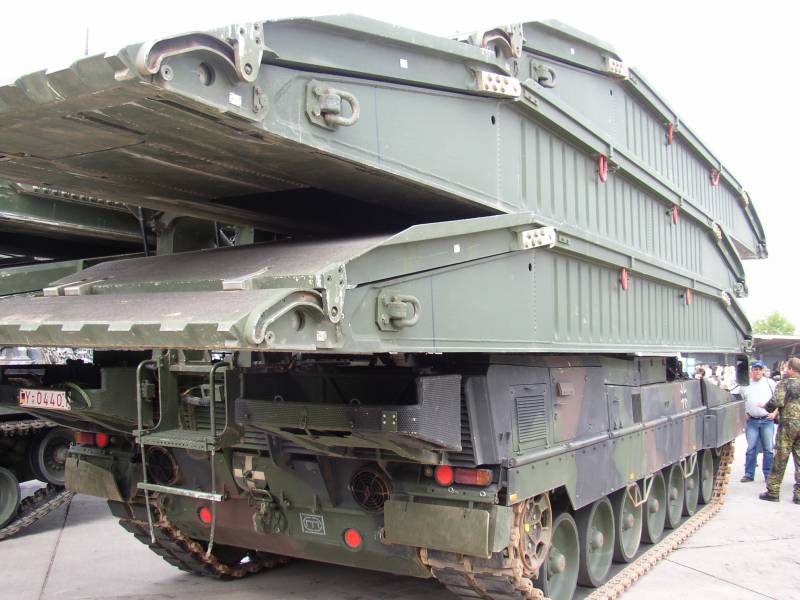
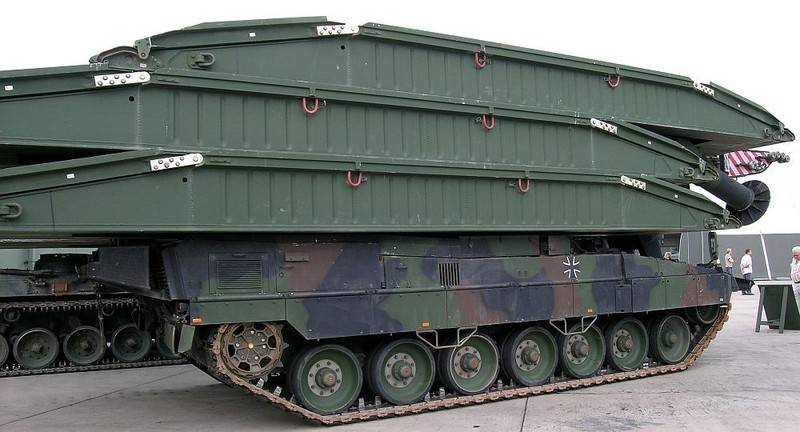
Information